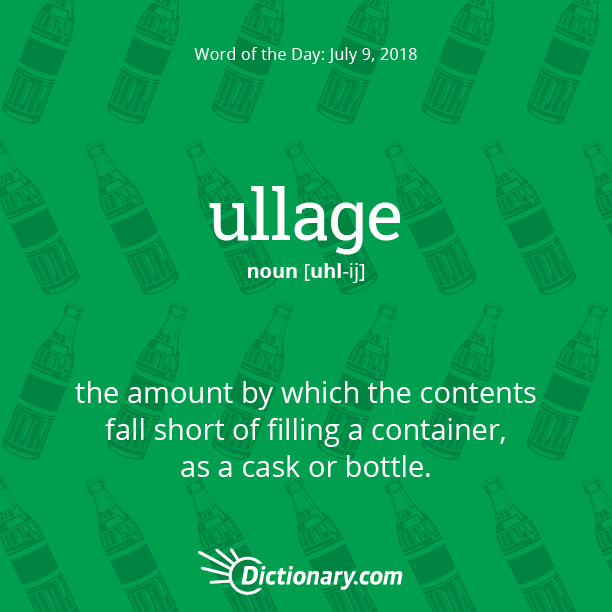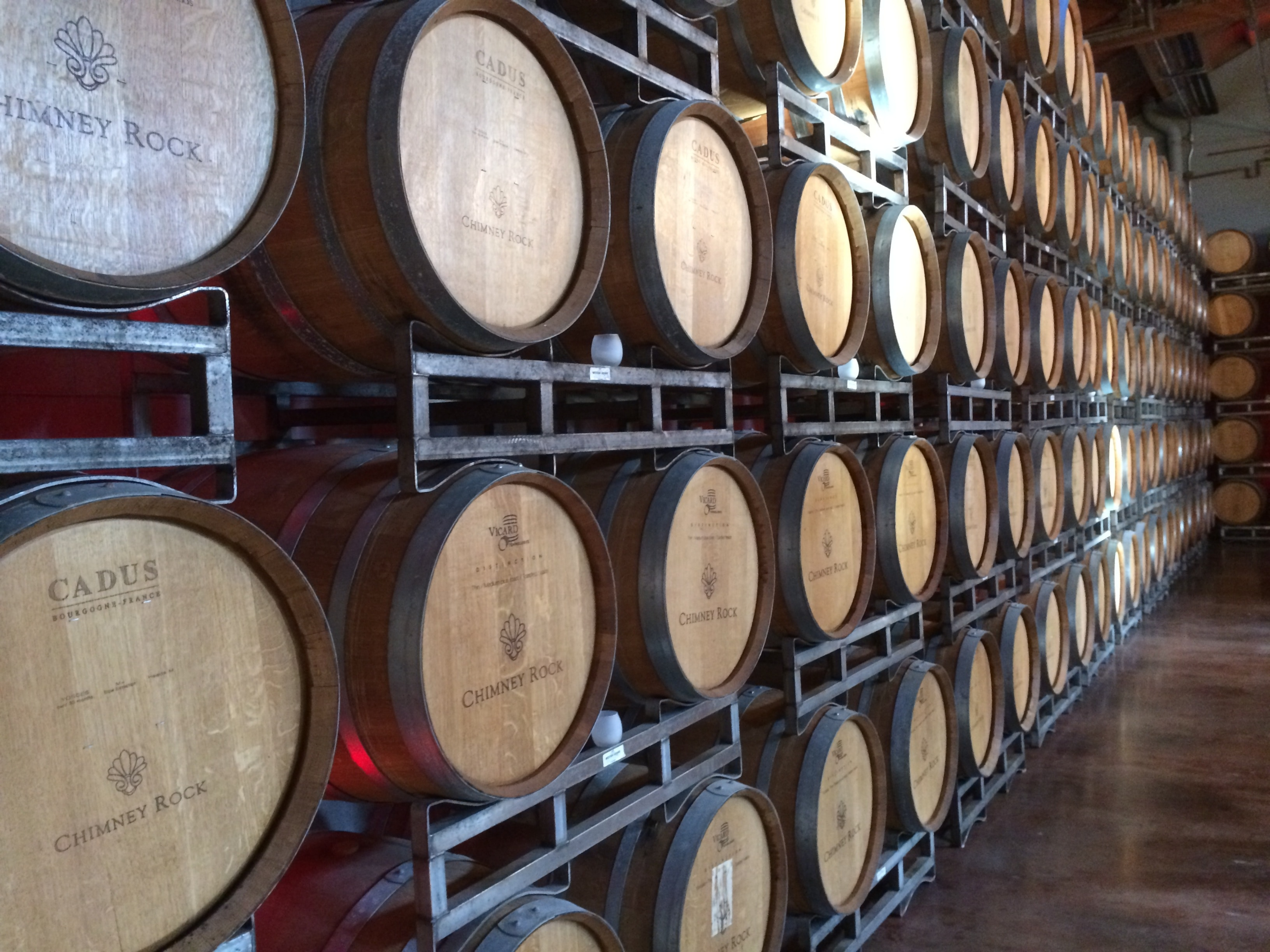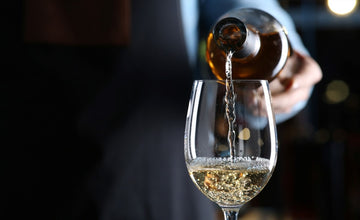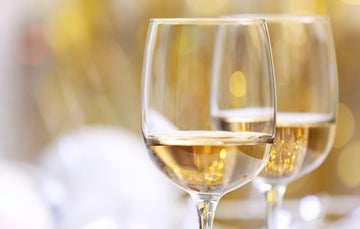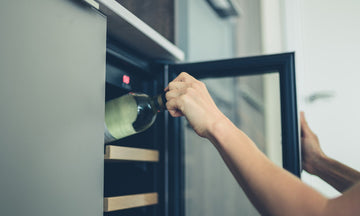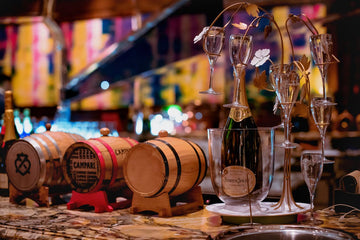
Ullage is a term commonly used in the wine industry to refer to partially empty cask or bottle. This phenomenon has significant effects on the aging of wines as ullage can cause oxidation and spoilage, resulting in a decrease in quality and taste.
The French ouillage filling method involves topping off barrels with younger wine to minimize ullage. Over time, it may increase naturally due to evaporation or leakage, but this method helps keep at bay for an extended period of time. This practice allows winemakers to store their wine for longer periods without sacrificing overall quality.
In addition to dilution, ullage wine can also be subject to spoilage as it can oxidize more quickly than a full bottle. This oxidation can cause the loss of important flavor characteristics and aroma, resulting in a decrease in overall quality. For this reason, ullage is something all wine producers must take into consideration when storing and aging their wines.
Ullage in American English
(LD - noun) quantity at which containers, notably liquids are less full Webster' 'NW' Dictionary 4th Edition. Copyright 2010, HoughtonMifflin Harcourt. It has a legal right of use. Originally from English-speaking French language - "meulage", a fill in the hole of the bunghole or in the gully a gully oriller, a filler to bung holes - " a gully ") ',
What happens if there's Ullage space in your cask or tank?
Ullage is an important factor to consider when aging wine, as it affects the fill level of tanks or bottles containing the beverage. The fill level of a tank or bottle will determine how much oxygen contacts the wine, which in turn affects its flavor and complexity as it ages. A higher fill level means less oxygen contact, making for a slower rate of oxidation and maturation. On the other hand, lower fill levels mean more exposure to oxygen, speeding up the oxidation process. As fill levels decrease over time due to evaporation, the rate at which a wine matures increases.
What causes Ullage?
Ullage is the empty space or air gap that forms in wine bottles over time. It can occur as a result of wine being stored incorrectly, wine evaporation, oxidation and cork shrinkage. Factors such as temperature fluctuations, light exposure and bottle position can all play a role in determining levels. As wine ages it will naturally evaporate, which can cause an increase in ullage when the wine is left to stand for extended periods of time without being properly sealed. Ullage levels can also be affected by oxidation through microscopic holes present in the cork. If wine is moved around frequently or exposed to too much sunlight and heat, this could potentially cause more oxygen to enter the bottle leading to higher ullage levels. Finally, cork shrinkage can also lead to increased ullage as the wine matures and the cork contracts over time. It is important to be aware of these factors in order to ensure wine bottles are stored correctly and ullage levels remain within acceptable limits.
Overall, it's important to remember that ullage is a natural occurrence when wine ages but can be prevented or minimized by taking the right steps to store wine properly.
By following adequate storage procedures and keeping an eye on ullage levels, wine enthusiasts can enjoy their favorite bottles for longer periods of time without experiencing any loss in quality.
Frequently Asked Questions:
What does 90% ullage mean?
Ullage is an empty space in a bottle of alcoholic beverage such as wine. It is derived from the French word 'ouillage', which means 'to fill up'. A typical standard bottle of wine has 90% ullage, meaning that it contains 90% empty space and 10% actual liquid. This empty space allows for a certain amount of oxidation to take place, allowing for the same wine to develop distinct flavors over time. It also minimizes movement within a bottle of wine during shipment or storage, minimizing potential damage to the cork, label or seal. Ullage can vary depending on the type and vintage of wine; higher end bottle may contain less empty space than lower quality ones. As such, understanding ullage is important when selecting and storing wine. When looking to purchase a bottle of wine, always pay attention to the empty space inside it as this can have an impact on its flavour profile and shelf life. Ultimately, knowing about 90% will help you understand how much empty space is present in a bottle of alcohol beverage and why it's so important for both storage and taste. It's also essential to consider if you're buying large quantities of wine or other alcoholic drinks for your home or business. By keeping empty space in mind, you can ensure the quality of your beverages remains intact.
Should you worry if there's Ullage in Wine?
In some cases, it can be an indicator of spoilage in wine due to oxidation or bacterial activity. For example, if ullage increases significantly over time it could point to microbial growth within the bottle. If you notice this change, it’s best to discard the batch as soon as possible.
Ullage may also be attributed to carbon dioxide loss from cork failure or premature aging techniques. When carbon dioxide is lost, it can cause volatiles such as sulfur dioxide to be released into the wine, resulting in off-aromas and flavors. These derived forms can impact the taste of your wine, causing it to appear dull or flat. If you’re experiencing this issue, then proper storage and handling practices may help alleviate further issue.
Wine Connoisseurs Thoughts:
Wine connoisseurs take great care with ullage, as old French filling techniques are often used to reduce its effects on wines kept in barrels or bottles over long periods of time. In these instances, special attention is paid to the amount of air and oxygen in the bottle in order to keep it from happening. This can involve using old French techniques such as waxing or corking, which help protect the wine from oxidation.
Conclusion
The conclusion about ullage and its impact on wine aging is clear. When wine is stored in a wine bottle or other container, oxygen present inside the container will affect the liquid inside over time. This process can be accelerated by an increase in headspace or ullage which leads to increased oxidation of the wine during storage, ultimately reducing its quality and prematurely aging it. For these reasons, wine should always be stored with minimal air space to ensure that it ages properly and maintains its optimal flavor. Storing wine at consistent temperatures and away from light are also important factors for proper wine aging. With careful attention to detail, wine lovers can rest assured their precious bottles have been appropriately taken care of and will provide them with years of enjoyment.


